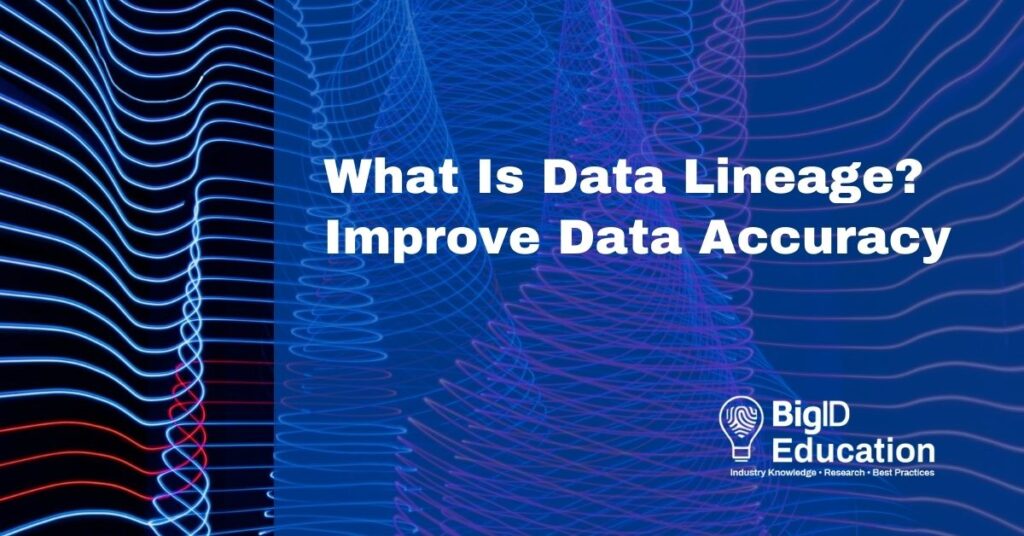What Is Data Lineage?
Data lineage tracks the changes and transformations that data undergoes throughout its entire lifecycle, from source to destination — and every step along the way.
Effective data lineage provides a comprehensive view of data so organizations can understand their data, visualize data flows, and know the whole (true) story behind their data.
Why Is Data Lineage Important?
Simply put, data lineage helps organizations gain confidence in their data’s accuracy and quality. Companies can see where their data came from, when and how it has changed, where it has moved throughout the organization, and where it is located.
Not to be confused with data provenance, which focuses on the origin of data collection, data lineage provides a view into the entire lifecycle of a company’s data. With full visibility into the lifecycle, businesses can confirm that data came from a trusted source, went through the correct data transformation processes, and exists in the right location.
Why Keep Track of Data Lineage?
Once data is collected, it undergoes many changes that companies need to be aware of to ensure the data’s accuracy, consistency, and quality.
In order to reduce risk, maintain regulatory compliance, enable effective data governance, and drive better business decisions, companies must be able to see all the changes that a data set has gone through since it entered the organization. Users must be able to identify errors, facilitate error resolution, perform system migrations, and see and understand all updates to data.
Additionally, it’s important to know who made changes to data, how they updated it, and all processes that they used — at any point throughout the data lifecycle. Effective, automated data lineage capabilities make this possible.
Top Benefits of Data Lineage
When organizations have a full view of their data — including all changes, migrations, metadata, and processes it has undergone — they can use their data to make more informed, effective, and strategic business decisions. Tracking data lineage enables businesses to:
- Monitor data changes and migrations throughout the organization
- Identify errors to data so they can be flagged for remediation
- Reduce risk on process changes and perform system migrations
- Get a full view of metadata and develop an automated data mapping framework
Data Lineage Use Cases
Data lineage makes a lot of professionals’ lives easier. With effective lineage, CDOs can meet compliance, business analysts can be more confident in their predictions, and IT can move away from manual processes and grueling Excel spreadsheets.
Data lineage helps enterprises with:
Cloud migration — Identify and record critical data elements for cloud migration and digital transformation efforts. Track the lineage of data from on-prem to cloud — or cloud to cloud. In the rush to the cloud, data volume will continue to exponentially increase, and effective lineage capabilities will become even more and more important..
Regulatory compliance — GDPR, CCPA, and several other U.S. and global laws and regulations require that companies understand the purpose for which their data was collected — and how data flows through their systems.
Data analytics — Analysts can confidently make better business decisions with more accurate data and a clear view of their data in context.
Data discovery — Data lineage goes hand-in-hand with solid discovery capabilities. Knowing and identifying all of your data is necessary for tracking it and improving its quality — and good data lineage practices facilitate deeper discovery.
Data Lineage Tools
BigID’s actionable, ML-based platform for data privacy, data security, and data governance enables data professionals to get full visibility into their data.
Automated Data Lineage Vs. Manual Data Lineage
Automation and machine learning enable smart data lineage practices that are always improving. Automated lineage frees up data and IT teams from manually mapping data flows so they can focus on more strategic initiatives.
Data Mapping
As data goes through transformations and moves through an organization, every change needs to be mapped. BigID maps and monitors data movement — and ensures that the data is accessible and usable.
Tracking file access permissions, data retention, and data remediation all leads to better data lineage flows. manage data processes like file access permissions, data lineage flows, data retention, data remediation, etc.
Data Remediation
With BigID, organizations can find and flag errors in their data at any point in the data lifecycle to further strengthen data lineage. Remediate sensitive, critical, and regulated data; track file access permissions, and manage remediation workflows.
Report on Third-Party Sharing
With BigID, automate the generation of data flows encompassing data transfers, and validate third-party data flow with data-driven insights for regulatory compliance.
Want to learn more? Check out a BigID demo, and we’ll show you exactly how BigID’s capabilities can help you straighten out your data lineage initiatives from A to Z.

